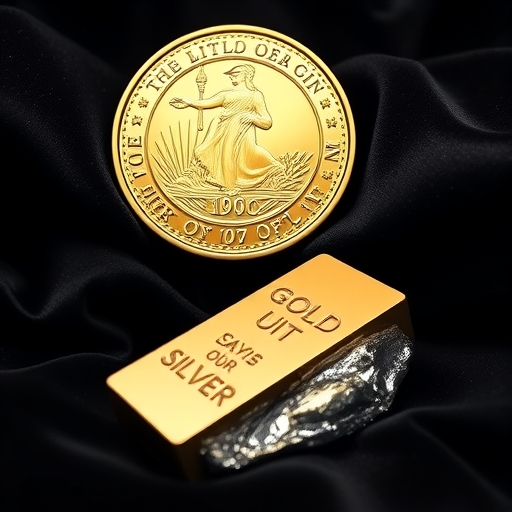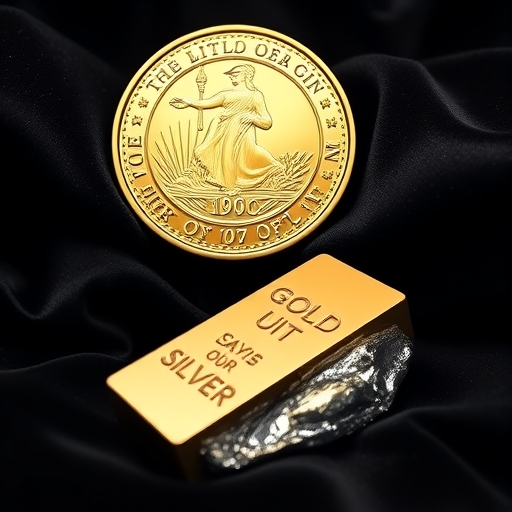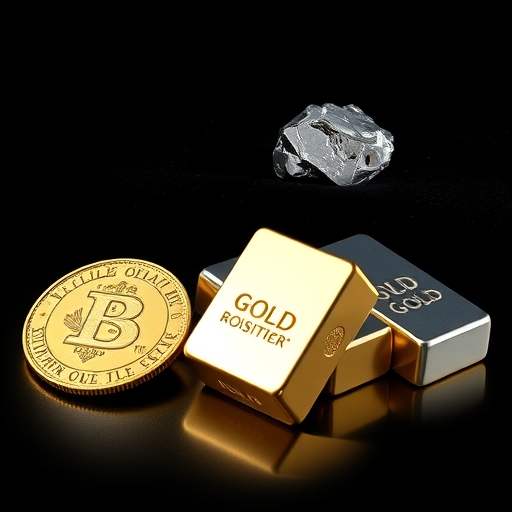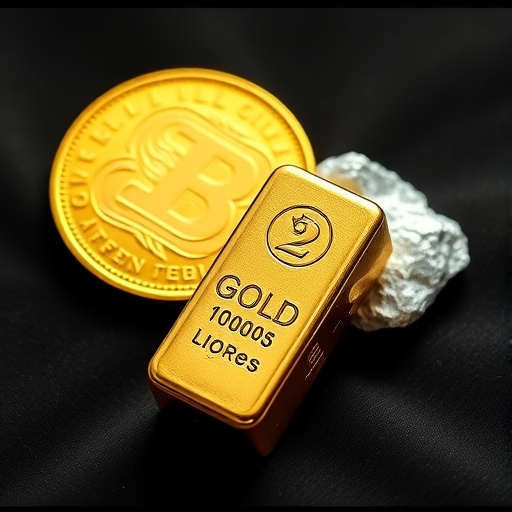
Is Gold or Silver Positive? 5 Key Insights Investors Must Know
Table of Contents
ToggleThe Precious Metals Pursuit: Is Silver Poised to Outshine Gold After Its Recent Surge?
Hello there! Welcome to our exploration of the fascinating world of precious metals. For centuries, gold and silver have captured human attention, serving as stores of value, symbols of wealth, and essential components in industry. In recent times, they’ve been making headlines once again with significant price movements. While gold often steals the spotlight, its less glamorous sibling, silver, has quietly staged an impressive rally. This has left many investors wondering: between gold and silver, which metal presents the more compelling opportunity right now? Let’s dive in together and analyze the data to find out.
The following points encapsulate why precious metals, particularly gold and silver, continue to be relevant and subject to considerable investor interest:
- Historical significance as a store of value.
- Recent price movements showcasing potential investment opportunities.
- Market interactions driven by both safe haven demand and industrial applications.
Decoding the Recent Gold Price Surge: What’s Driving Records?
You’ve likely seen the headlines. The gold price has been on a remarkable upward trajectory. Starting in January 2024, when it hovered just slightly over $2,000 per ounce, gold has climbed impressively. We’ve seen it reach and surpass fresh record highs, pushing towards figures around $3,328 to $3,400 per ounce in recent trading. This kind of appreciation in a relatively short period is notable for an asset often seen primarily as a conservative store of value.

What fuels such a surge in the gold market? Primarily, it’s driven by its role as a safe haven asset. When global economic uncertainty rises, when geopolitical tensions flare up (consider recent events in the Middle East or ongoing situations like in Ukraine), investors tend to seek safety. Gold, lacking significant industrial uses that tie it closely to economic cycles, becomes a preferred destination for capital seeking refuge from volatility in stocks, bonds, or even currencies like the US Dollar. Fears of inflation, or even just persistent inflation concerns, also contribute, as gold is historically seen as a strong inflation hedge, maintaining purchasing power when currencies lose value.
Silver’s Impressive Leap: Analyzing the 28% Rally and 13-Year Highs
While gold was setting records, silver wasn’t just standing still. It has experienced a significant and perhaps less publicized surge of its own. Over the past six months or so, the silver price has jumped dramatically. From a level around $28.92 per ounce in January 2024, it has risen to reach figures near $37.12 per ounce recently. That’s a substantial rise of over 28% in just over half a year. This rally pushed silver to highs not seen in 13 years, specifically above the $37 mark.

This strong performance in silver is intriguing. While it shares gold’s safe haven qualities to some extent, silver’s price is also heavily influenced by other factors that we’ll explore shortly. A 28% gain in six months is a significant return for any asset, and it underscores the growing interest and demand in the silver market. It signals that something more than just safe haven buying might be at play.
The Curious Case of Divergence: When Gold and Silver Part Ways
Historically, gold and silver prices tend to move together. Data suggests they show a positive correlation, moving in the same direction on approximately 75% to 79% of trading days. They are both considered precious metals, both act as potential inflation hedges, and both benefit from safe haven demand during times of crisis. So, when they start to diverge, it’s worth paying close attention.
Recently, we’ve observed an unusual period where silver prices have leapt ahead while gold prices struggled or consolidated on specific days. This divergence, occurring over five or more consecutive trading sessions, is notable – reportedly the longest such streak in the 21st century. What does this tell us? Divergence can sometimes indicate a shift in market dynamics or investor focus. While gold holds steady on its safe haven status, silver’s additional demand drivers might be coming to the forefront, causing it to potentially outperform gold in certain periods.
Understanding the Gold/Silver Ratio: A Historical Perspective
One of the most important metrics for comparing gold and silver is the Gold/Silver Ratio. This ratio tells us how many ounces of silver it takes to buy one ounce of gold. Think of it like comparing the relative value or scarcity between the two metals at any given time. Is gold expensive relative to silver, or is silver expensive relative to gold?

Throughout history, this ratio has fluctuated wildly. In Roman times, it was fixed at around 12:1. Over the past 50 years, the average has hovered somewhere in the 50s or 70s. During times of extreme economic distress or uncertainty, the ratio often rises dramatically. Why? Because in pure panic, the market rushes disproportionately into gold, the ultimate perceived safe asset, while silver’s industrial uses become less relevant or even a liability, causing its price to drop relative to gold.
The Gold/Silver Ratio Today: Signalling Silver’s Undervaluation?
Now, let’s look at the Gold/Silver Ratio in the context of the recent price movements. The ratio recently reached very high levels, exceeding 100 at one point and more recently trading around 91. To put this in perspective, a ratio above 100 was previously seen during moments of extreme panic like the initial COVID-19 crisis in 2020, or going back further, during periods in the 1990s and even the Great Depression. What does such a high ratio signify?
A high Gold/Silver Ratio generally suggests that silver is significantly undervalued relative to gold. It implies that the market is pricing in conditions akin to a global economic recession, where gold’s safe haven appeal is paramount and silver’s industrial demand is expected to be weak. However, historical patterns suggest that these extreme ratio levels are often followed by periods where silver significantly outperform gold as the ratio eventually reverts back towards its long-term mean (which, again, is much lower, somewhere between 50 and 70 over various historical timeframes).
| Timeframe | Gold/Silver Ratio | Market Status |
|---|---|---|
| Roman Times | 12:1 | Fixed |
| 2020 | Above 100 | Extreme Panic |
| Present | 91 | Potential Undervaluation |
Many experts view the current high ratio as a strong indicator that the gold bull market might still be in its earlier stages, particularly concerning the precious metals complex as a whole. The expectation, based on historical precedent, is that silver will eventually catch up to gold’s performance, and potentially surpass it, as the ratio corrects. This perspective frames the current high ratio not just as a metric of relative value, but as a potential signal of a forthcoming opportunity in silver.
Demand Dynamics: The Tale of Two Pillars – Safe Haven vs. Industrial Use
To truly understand the distinct behaviors of gold and silver prices, we need to examine their primary sources of demand. This is where their paths diverge significantly, even though both share some similarities.
- Gold’s Demand: The Pure Safe Haven
As we touched upon, gold’s primary demand driver is its role as a safe haven and store of value. It is largely industrially useless in significant quantities for most modern applications, meaning its value isn’t largely detached from the performance of the global economy. Demand surges during periods of:- Economic uncertainty and recession fears
- Geopolitical tensions and conflict
- Policy uncertainty (e.g., trade wars, government debt concerns)
- Inflationary pressures (as a hedge against currency devaluation)
Essentially, people buy gold when they are worried about preserving wealth in turbulent times.
- Silver’s Demand: The Dual Nature
Silver, on the other hand, has a dual personality. It shares some of gold’s safe haven characteristics, and demand for silver bullion and coins also rises during times of uncertainty and inflation concerns. However, a substantial portion of silver’s demand comes from industrial applications. This makes silver’s price sensitive to the health of the global economy and specific manufacturing sectors.
Industrial Demand for Silver: Solar, Electronics, and the Economic Link
Let’s zoom in on silver’s industrial side. This is a critical difference from gold and a key factor influencing the silver price. Silver is essential in a growing number of high-tech and green-tech applications:
- Solar Panels: Silver paste is a crucial component in photovoltaic cells, and the booming solar energy industry is a major driver of silver demand.
- Electronics: Silver is used in switches, contacts, and circuits in countless electronic devices due to its excellent electrical conductivity.
- Electric Vehicles (EVs): EVs use significantly more silver per vehicle than traditional internal combustion engine cars.
- Batteries: Silver is used in certain types of batteries.
Because of these applications, industrial demand for silver is directly linked to global economic activity and growth in these specific sectors. An economic slowdown or recession typically reduces manufacturing output and consumer spending on electronics and vehicles, acting as a headwind for silver prices. This connection to the industrial cycle means silver can sometimes behave more like an industrial metal (like copper) than a pure safe haven, as evidenced by silver’s positive correlation with copper prices.
Geopolitics, Tariffs, and Policy: Macro Factors Shaping Precious Metals
Beyond general economic health, specific macroeconomic factors and government policies play a significant role in the precious metals market. For instance, ongoing inflation concerns, even if inflation rates are modest, provide fundamental support for both gold and silver as hedges. Investors are looking for assets that won’t lose value if their currency’s purchasing power erodes.
Geopolitical events are particularly impactful. Rising tensions, such as the conflict between Israel and Iran or the broader instability it represents (potentially impacting crucial shipping lanes like the Strait of Hormuz), immediately increase uncertainty in global markets. This uncertainty directly translates into increased safe haven demand, primarily benefiting the gold price, and to a lesser extent, silver as a store of value.
Trade policies, such as the imposition of tariffs, can have complex effects. While tariffs might initially be seen as inflationary (increasing import costs), they can also lead to retaliatory measures that slow down global trade and economic growth. An economic slowdown directly negatively impacts silver’s industrial demand. Furthermore, tariffs can create policy uncertainty, which tends to boost gold’s safe haven appeal while potentially hurting silver’s industrial prospects. This divergence in how tariffs affect the two metals can contribute to their price action diverging, as we’ve recently seen.
Even the stance of central banks is a factor. The prospect of central banks being slow or hesitant to intervene in potential economic or financial crises is considered a risk factor for the market. Such a scenario might disproportionately favor gold (the ultimate crisis hedge) over silver, particularly industrial silver, which relies on a functioning economy.
The Supply Side: Why Deficits Matter for Silver
Another crucial element influencing the silver price, and often overlooked compared to demand, is supply. The global silver market has been facing a supply challenge in recent years. According to data from the Silver Institute, the global silver market has run a supply deficit relative to demand for four consecutive years.
What does a supply deficit mean? It means that the amount of silver being mined and recycled is less than the amount being consumed by industrial users and investors. This persistent imbalance between limited supply and robust demand creates upward pressure on prices. The Silver Institute forecasts suggest that these supply deficits are projected to continue in both 2024 and 2025. This structural aspect of the silver market provides a fundamental underpinning for potentially higher prices in the medium term, independent of cyclical demand factors.
Gold vs. Silver: Investment Considerations for Your Portfolio
Now that we’ve explored the market dynamics, let’s consider how gold and silver stack up as investments for your portfolio. Both offer distinct advantages, but they also differ in ways that might make one more suitable for your specific goals and budget.
- Accessibility and Entry Price: One of the most apparent differences is the price per ounce. Gold is significantly more expensive. This means that for investors with smaller budgets, getting started with physical metal or even smaller increments of related assets (like ETFs or futures contracts) is much easier with silver. Silver offers a much lower entry price point, making participation in the precious metals market more accessible to a wider range of investors.
- Inflation Hedge: Both metals are widely regarded as effective hedges against inflation. Holding gold or silver can help preserve the purchasing power of your wealth during times when currencies are losing value. While gold has a longer-standing reputation solely for this purpose, silver has historically performed this role effectively as well.
- Portfolio Diversification: Adding precious metals to your portfolio can help diversify it, meaning they tend to perform differently than traditional assets like stocks and bonds. This can help reduce overall portfolio risk, particularly during periods of market turmoil. Gold is often considered the premier diversification tool due to its low correlation with other assets during crises. However, silver also offers valuable diversification benefits, providing this feature at a lower cost.
- Growth Potential vs. Stability: Given silver’s dual nature (industrial + safe haven) and the current high Gold/Silver Ratio suggesting undervaluation, some argue that silver offers potentially greater upside growth potential in the medium term if the ratio reverts and industrial demand remains strong. Gold, while capable of significant rallies during crises, is often seen more as a stable preserver of wealth.
Choosing between gold and silver isn’t necessarily about declaring one definitively “better” than the other. It depends on your individual investment goals, risk tolerance, time horizon, and available capital. However, when considering the current market conditions, particularly the ratio and the supply/demand dynamics, silver certainly presents a compelling case, especially for those looking for potential growth alongside wealth preservation.
The Outlook: Is Silver Set to Outperform Gold?
So, where do we stand? Are gold or silver positive for investors looking ahead? Based on the analysis of recent price action, market drivers, the Gold/Silver Ratio, and supply/demand dynamics, the outlook for both precious metals appears favorable, driven by ongoing uncertainty, inflation concerns, and central bank postures. However, the question of which might offer a better opportunity often boils down to their relative positioning.
Many experts are increasingly bullish on silver’s prospects relative to gold. The extremely high Gold/Silver Ratio is a key factor cited, suggesting significant potential for silver to catch up and even outperform gold as the ratio normalizes. Coupled with strong and potentially growing industrial demand (especially from green energy technologies) and the forecast for continued supply deficits, the fundamental picture for silver looks robust.
From a risk-reward standpoint with a medium-term investment horizon, some analysts suggest that silver might indeed be the “vastly better investment opportunity” compared to gold right now, precisely because of its relative undervaluation and the potential for the ratio to revert. While gold might continue to benefit from pure safe haven demand driven by fear, silver has the added catalyst of industrial growth and the statistical tendency for high ratios to correct dramatically in silver’s favor.
Of course, like any investment, risks exist. A sharp global economic downturn could severely impact silver’s industrial demand, potentially favoring gold even more as the sole safe haven. Central banks failing to effectively manage economic crises could also alter the landscape. However, the confluence of factors pointing to silver’s current undervaluation and strong demand fundamentals makes a powerful case for its potential in the months and years ahead.
In conclusion, while gold’s performance has been impressive, silver’s recent surge, its attractive price point, its dual demand profile, the compelling message from the Gold/Silver Ratio, and the fundamental supply/demand imbalance all suggest that silver may offer a particularly positive outlook and a potentially higher-growth opportunity for investors looking at precious metals right now. It certainly warrants serious consideration for your portfolio.
is gold or silver positiveFAQ
Q:What factors influence the price of gold and silver?
A:The prices are influenced by market demand, economic conditions, inflation, and geopolitical tensions.
Q:Why is silver often considered undervalued?
A:The Gold/Silver Ratio often indicates that silver is cheaper compared to gold, suggesting potential for future price increases.
Q:How do industrial applications affect silver prices?
A:Industrial demand, particularly from sectors like electronics and solar energy, significantly impacts silver’s price stability and growth potential.
You may also like
Calendar
| 一 | 二 | 三 | 四 | 五 | 六 | 日 |
|---|---|---|---|---|---|---|
| 1 | 2 | 3 | 4 | 5 | 6 | 7 |
| 8 | 9 | 10 | 11 | 12 | 13 | 14 |
| 15 | 16 | 17 | 18 | 19 | 20 | 21 |
| 22 | 23 | 24 | 25 | 26 | 27 | 28 |
| 29 | 30 | 31 | ||||
發佈留言
很抱歉,必須登入網站才能發佈留言。